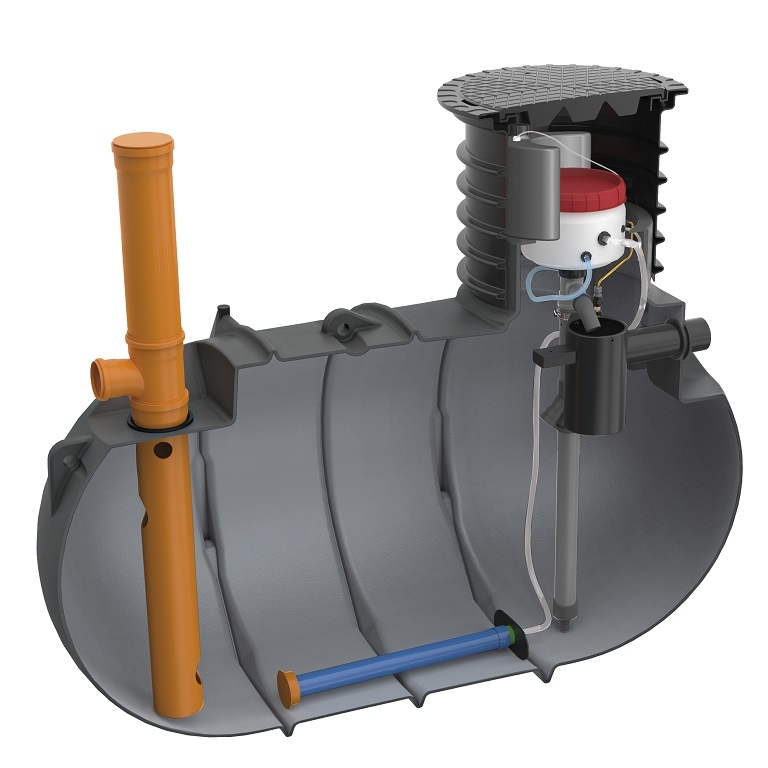
If you live in a rural area and have limited or no access to the main drainage network, there may be a requirement for you to install an off-mains wastewater treatment plant. Before you begin your search, you will need to determine what size system is suitable for your property.
In this article we will take you through the process of how to size a sewage treatment plant for single houses and multiple properties.
What does a sewage treatment plant do?
Before we look at what size sewage treatment plant you need, it is important to understand what a sewage treatment plant is and what it does.
A sewage treatment plant is designed to collect and treat wastewater from domestic properties or commercial applications on site. They typically consist of one of two chambers and, unlike a traditional septic tank, utilise oxygen to break down harmful contaminants and pollutants. This ensures that the final effluent quality (treated wastewater) is clean enough for discharge, either into the ground via a drainage field, or into a watercourse such as a river, stream or lake.
How to calculate the size of a sewage treatment plant
The established design method and process for calculating the size of a sewage treatment plant is outlined in British Water Code of Practice: Flows and Loads – 4, however, a professional engineer may need to use their experience and judgment when applying them. If a proposed alternative usage rate or method of sizing might be more appropriate for your property, this should be supported by the collection of data or additional site-specific evidence to validate the proposal.
It is important to note that sewage treatment plants are primarily designed based upon how many people they can cater for, rather than how many litres of wastewater the tank can hold and treat per day.
Single houses or flats
For single houses, the property must be sized for a minimum of five people, or five “population equivalent” (PE). This is typically for a three-bedroom house.
After that, one extra person should be added for every additional bedroom within the household.
If we look at the number of bedrooms for instance:
- a four-bedroom house would need to be sized for six people (6PE)
- a five-bedroom house for seven people (7PE)
- a six-bedroom house for eight people (8PE), and so on
If you have a small one- or two-bedroom flat, the following is recommended:
- a minimum three-person system for one bedroom
- a minimum four-person system for two bedrooms
If the system is required for a group of flats, the minimum population value will need to be added together separately to give the total size. For example, a block of four one-bedroom flats would need at least a 12PE sewage treatment plant.
The above advice is based upon the British Water minimum population (P) loads for both new and existing properties and should not be altered downwards. For instance, if you require a 7PE sewage treatment plant and you are unable to locate a system that is specifically manufactured to cater for seven people, you should opt for an 8PE system, such as the Rewatec Solido Smart, as opposed to a 6PE system.

A group of houses
For residential areas where multiple houses need to connect to one sewage plant, you can reduce the overall size of the system by multiplying the figure by 0.9 (for a population of 13-25 people), For larger communities, for a population of 26-50 people, you can reduce the size of the system again by multiplying the figure by 0.8.
For example, let's say there are three houses — one with three bedrooms and two with five bedrooms. Using the original calculation, this provides a PE of 19 (five people for the three bedroom and seven people for each four-bedroom house). You can then times this by 0.9 to give the final PE of 17. You would therefore need a sewage treatment plant that caters for at least 17 people for these three houses together.
A few final points
It should be noted that all sewage treatment plants are certified to their maximum PE capacity. For example, a 20PE plant would be suitable for a maximum of 20 people.
If the population of the sewage treatment plant exceeds 50PE, the sizing of the system for your specific application, whether that be for a campsite, a school, or a restaurant to name but a few, should be carried out by a qualified engineer.

Need help planning your septic system?
Premier Tech offers a full suite of services, including site surveys, soil percolation tests, planning help, and expert installations.
Send us a few quick details and we'll give you free advice and recommendations based on your needs.






